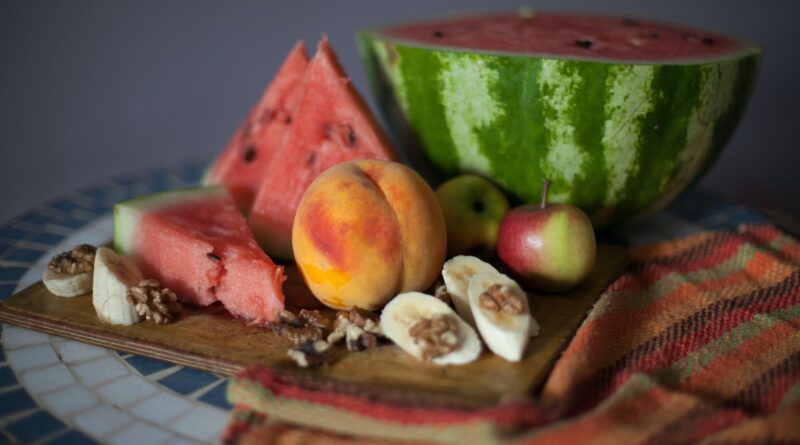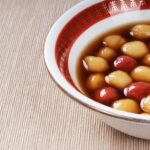Mizu Gashi (水菓子)
Mizu Gashi
水菓子
“Mizu” (水) means “water,” and “kashi/gashi” (菓子) means “sweets” or “snacks.”
「水」は “water,” 「菓子」は “sweets” もしくは “snacks” を意味します。
What do you think is the meaning of “mizugashi” (水菓子), which is made by the two words, “mizu” and “kashi.”
あなたはこの二つを組み合わせた「水菓子」という言葉を聞いて、何を思い浮かべますか?
Actually, “mizugashi” means “fruits.”
実は「水菓子」は「果物」を表します。
In the past, all light foods such as fruits were called “kashi.”
昔は、果物など、正式な食事以外の軽い食べ物全般を「菓子」と呼んでいました。
Among them, especially succulent fruits such as watermelons or pears has come to be called “mizugashi.”
その中でも、スイカや梨など、水気を含む果物のことを「水菓子」と呼ぶようになりました。
Nowadays, since the word “kudamono” (果物) is mainly used to refer to fruits, the number of Japanese people who think of “mizugashi” as “sweets that contains a lot of water” (such as jelly dessert) is increasing.
(Sweets that contains a lot of water are formally called “namagashi” (生菓子), the literal meaning of which is “fresh/unbaked sweets.”)
(Sweets that contains a lot of water are formally called “namagashi” (生菓子), the literal meaning of which is “fresh/unbaked sweets.”)
現在では「果物」という言葉が一般的に使わるため、「水菓子」と聞いて「水分を多く含んだ菓子」を想像する日本人が増えています。
(水分を多く含む菓子は、「生菓子」と言います。)
(水分を多く含む菓子は、「生菓子」と言います。)
In fact, even if you search for “mizugashi” on Google Images, it’s hard to find fruits.
実際、「水菓子」で画像検索しても、果物はほとんど出てきません。




